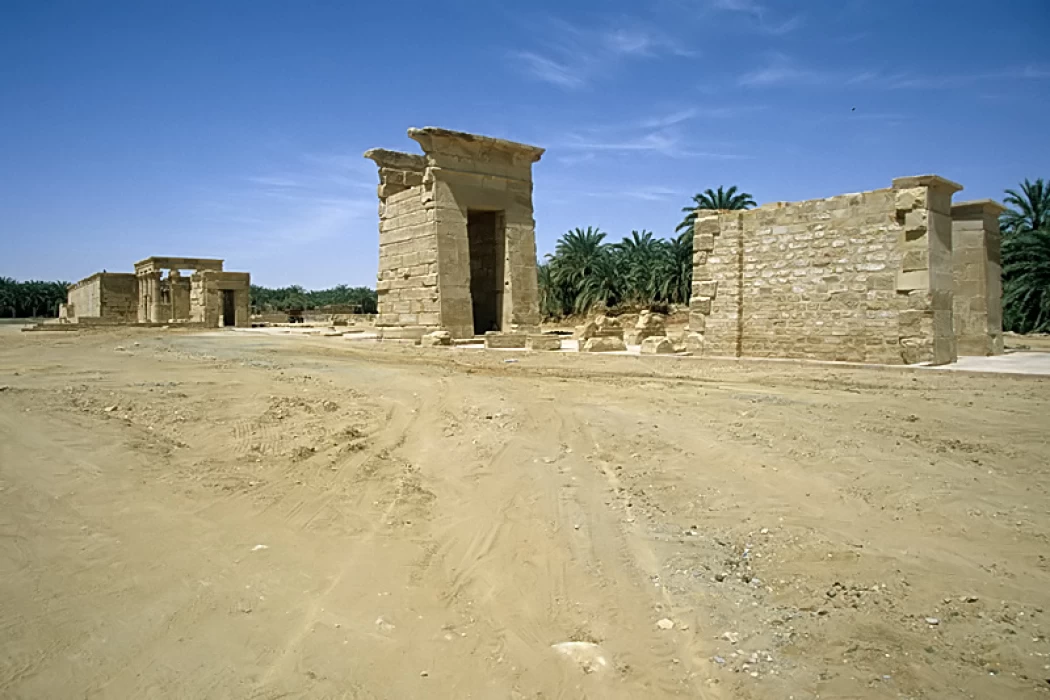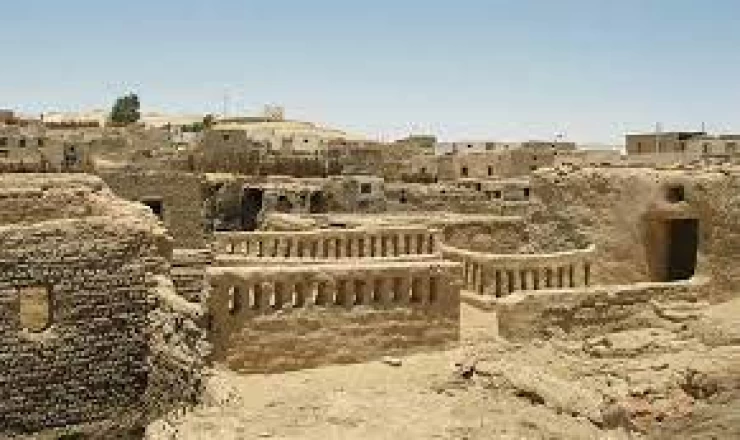
Temple of Hibis in Kharga Oasis
Hibs Temple is the official symbol of the New Valley Governorate, one of the rarest and most important monuments in Egypt and bears the Greek name of the ancient Egyptian word "Hibt", which means the plow, is called the City of Exterior and the Temple in that one, and has gained its significance as the last remaining version of the Sawi-Persian Age, for the family 26 "660- 330 BC", since the reign of King BSM II, Wahib Ipres, was constructed in the era of the Persian King, Dara I "510-490 S.
On the remains of an ancient temple dating back to the age of the twenty-sixth dynasty 664 s. M., and has ancient origins dating back to the Middle State era in 2100 B.C. It contains several historical epithets, including "Pharaoh, Persian, Ptolemaic and Roman".
The temple includes a number of features that can be visited, including 3 gates, a road for rams, the temple courtyard, and the Holy of Holies, in addition to secret passages and stairs leading to the second floor. At the entrance to the temple, there is the longest mural that tells about the legislation of the ruler of the Oasis and the oldest text to protect women's rights and achieve justice.
In addition to murals that tell the history of the temple and images of the worship of the Holy Trinity, the temple consists of sandstone on a relatively high area and is considered one of the most important Egyptian temples because it is the only temple remaining from the Persian Sawi era, and it was built to worship the holy trinity (Amun, Mut, and Khonsu). Mut-Khonsu.)
The phenomenon of perpendicularity is recorded on the ground in the Holy of Holies of the Temple of Hibis and is called ‘sister’, and its history in each temple is mostly due to the beginning of the establishment of the temple, or to one of the events associated with the temple god in this period, his birthday or the day he sat on the throne, and the sun perpendicular to the solar panel inside the temple, in an event that is repeated on the sixth of September and the seventh of April every year, coinciding with the ceremonies that were held in the temple.
Latest Articles
Admin
Aswan Governerate in Egypt
Aswan was known as ‘Sonu’ in ancient Egyptian times, meaning market, as it was a trading centre for caravans coming to and from Nubia. In the Ptolemaic era, it was called ‘Sin’ and the Nubians called it ‘Yaba Swan’. It was also known as the Land of Gold because it served as a great treasure or tomb for the kings of Nubia who lived there for thousands of years. Before the migration, Aswan's borders extended from Asna in the east to the border of Sudan in the south, and its inhabitants were Nubians, but after the Islamic conquest of Nubia, some Arab tribes settled there.
Admin
About Luxor Governorate in Egypt
The South Upper Egyptian area is home to the Egyptian governorate of Luxor. Its capital is Luxor, which was formerly Thebes, the capital of Egypt throughout multiple pharaonic eras. Its centers and cities are spread over both sides of the Nile River. The said governorate was established by Presidential Decree No. 378 of 2009, which was promulgated on the 9th of December of that year.
Admin
History of kafr El Sheikh Governorate
Kafr El Sheikh Governorate, located in the far north of Egypt in the Nile Delta, overlooking the Mediterranean Sea, is characterised by the diversity of natural life and environments, and is one of the Egyptian cities that can be visited after the end of the first semester exams at universities and schools, as it features many diverse tourist and recreational places at symbolic prices within everyone's reach.
Admin
Egypt's New Administrative Capital
The New Administrative Capital is considered the project of the era because it reflects a perfect image of the future and progress on the economic, cultural, social and civilisational level, as the capital is considered the new capital of Egypt at the present time. The importance of the New Capital is that it is a comprehensive transformation of the future of buildings, services and national and mega projects in Egypt.
Admin
Al Gharbia Governorate
The Governorate of Gharbia is inclusive in the geographical area of The Arab Republic of Egypt which is in the African continent, more specifically in the region surrounding the Nile delta, between Damietta and Rashid governance. To the control of the region from the north is Kafr El-Sheikh Governorate, from the south Menoufia Governorate, from the east – Dakahlia, Qalyubia Governorates, and to the west is the Beheira Governorate.
Admin
Hamata Islands (Qulaan Archipelago) in Marsa Alam
Each reserve has several sectors. In Wadi El Gemal Reserve, there is one of the natural areas called the Hamata area or Hamata sector in Wadi El Gemal Reserve. Its sectors are the perfect and most ecological, land and water, and host countless animals and plants found in the oceans and on the land.














